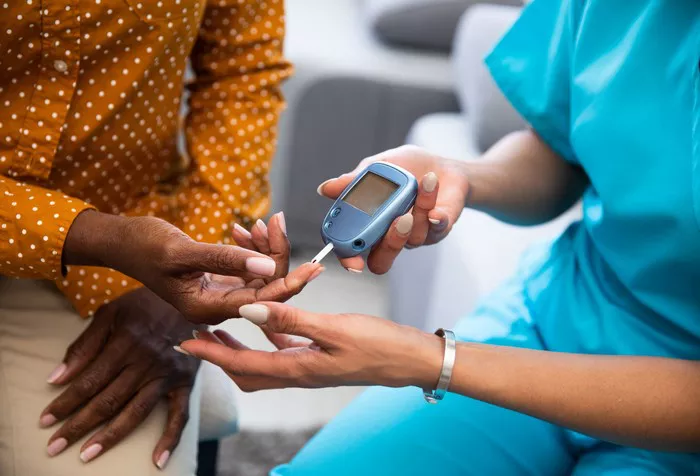In the realm of diabetes management, achieving optimal glycemic control is paramount for reducing the risk of complications and improving overall health outcomes. For many individuals with diabetes, lifestyle modifications, oral antidiabetic medications, and injectable therapies may suffice to maintain blood glucose levels within target ranges. However, as diabetes progresses or when glycemic control becomes challenging to achieve with conventional treatments, insulin therapy may be warranted. Determining the appropriate time to initiate insulin therapy is a critical decision guided by various factors, including the individual’s glycemic status, treatment goals, and overall health. In this comprehensive article, we explore the threshold A1c level at which insulin therapy may be required, empowering individuals with diabetes and healthcare providers to make informed decisions about diabetes management and treatment options.
Understanding A1c and Its Significance:
Hemoglobin A1c (HbA1c) is a key biomarker used to assess long-term glycemic control in individuals with diabetes. It reflects the average blood glucose level over the preceding two to three months, providing insights into overall glycemic status and treatment effectiveness. The American Diabetes Association (ADA) recommends target A1c levels for individuals with diabetes based on various factors, including age, comorbidities, and treatment goals. While individualized targets may vary, the general goal is to achieve an A1c level as close to normal as possible without increasing the risk of hypoglycemia.
Threshold A1c Level for Initiating Insulin Therapy:
Determining the threshold A1c level at which insulin therapy is required involves a comprehensive assessment of glycemic status, treatment response, and individualized treatment goals. While there is no universal A1c cutoff for initiating insulin therapy, several factors may indicate the need for insulin initiation:
1. Failure of Oral Antidiabetic Medications: When oral antidiabetic medications fail to adequately control blood glucose levels or when treatment response diminishes over time, healthcare providers may consider initiating insulin therapy to achieve better glycemic control.
2. High A1c Levels Despite Maximal Oral Therapy: If A1c levels remain elevated despite maximal tolerated doses of oral antidiabetic medications and lifestyle modifications, insulin therapy may be necessary to achieve target glycemic levels and prevent complications.
3. Symptoms of Hyperglycemia or Diabetic Ketoacidosis (DKA): Individuals presenting with severe hyperglycemia, symptoms of hyperglycemia (such as polyuria, polydipsia, and unexplained weight loss), or diabetic ketoacidosis (DKA) may require immediate insulin therapy to normalize blood glucose levels and mitigate acute complications.
4. Pregnancy and Gestational Diabetes: Pregnant individuals with gestational diabetes may require insulin therapy to achieve target glycemic control and reduce the risk of adverse pregnancy outcomes for both the mother and the fetus.
5. Comorbidities and Individualized Treatment Goals: Healthcare providers consider individual factors such as age, duration of diabetes, comorbidities, hypoglycemia risk, treatment adherence, and patient preferences when determining the need for insulin therapy and setting treatment goals.
Clinical Considerations and Decision-Making:
Initiating insulin therapy requires careful consideration of various clinical factors, patient preferences, and treatment goals. Healthcare providers employ a shared decision-making approach to collaborate with individuals with diabetes in selecting the most appropriate treatment regimen. Factors to consider when initiating insulin therapy include:
1. Type of Insulin: Healthcare providers may prescribe different types of insulin, including basal insulin, bolus insulin, premixed insulin, or insulin analogs, based on individual needs, treatment goals, and lifestyle factors.
2. Insulin Initiation Strategies: Insulin therapy may be initiated using various strategies, including basal insulin initiation, basal-plus or basal-bolus regimens, or initiation of premixed insulin formulations, depending on individual glycemic profiles and treatment goals.
3. Education and Support: Individuals initiating insulin therapy require comprehensive education and support to ensure proper administration, dose adjustment, glucose monitoring, hypoglycemia management, and adherence to treatment regimens.
4. Regular Monitoring and Follow-Up: Regular monitoring of blood glucose levels, A1c levels, and adherence to treatment regimens is essential for assessing treatment effectiveness, identifying potential issues, and making adjustments as needed.
Conclusion:
In conclusion, determining the threshold A1c level at which insulin therapy is required involves a comprehensive assessment of glycemic status, treatment response, and individualized treatment goals. While there is no universal cutoff for initiating insulin therapy, several factors, including failure of oral antidiabetic medications, high A1c levels despite maximal oral therapy, symptoms of hyperglycemia or DKA, pregnancy and gestational diabetes, and individualized treatment goals, may indicate the need for insulin initiation. Healthcare providers employ a shared decision-making approach to collaborate with individuals with diabetes in selecting the most appropriate treatment regimen based on clinical considerations, patient preferences, and treatment goals. By understanding the indications for insulin therapy and engaging in shared decision-making, individuals with diabetes and healthcare providers can optimize glycemic control, reduce the risk of complications, and improve overall health outcomes.

























